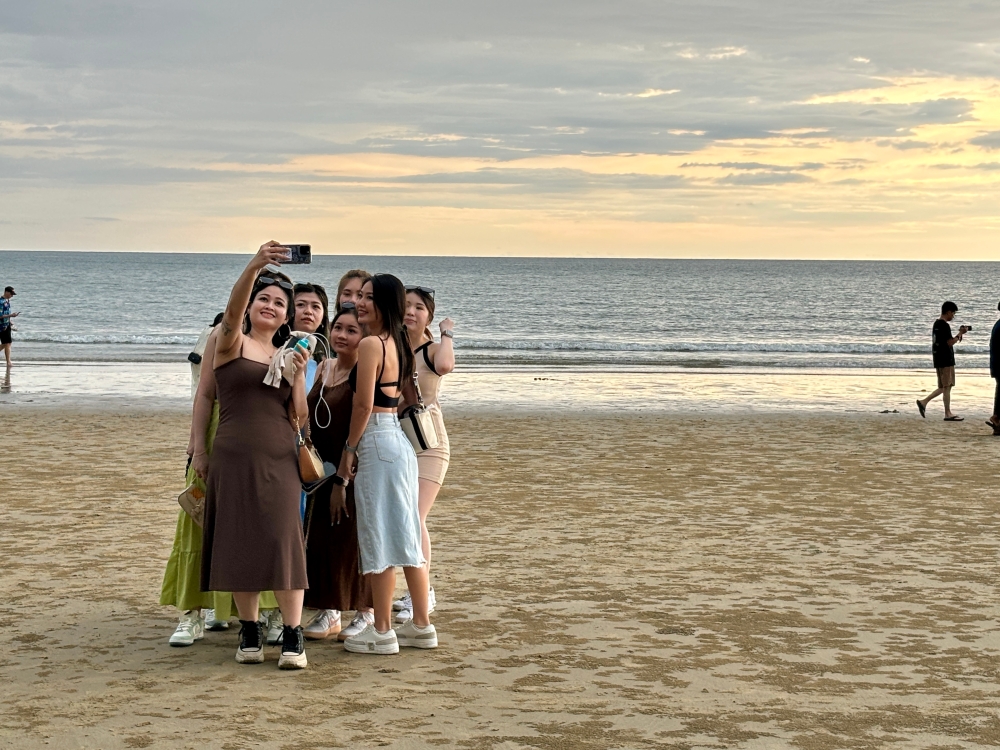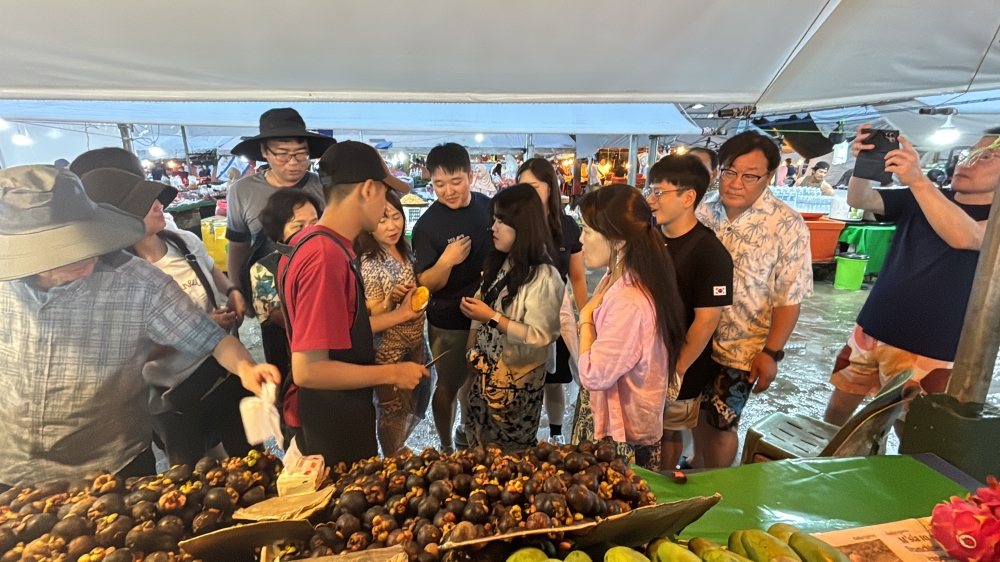KOTA KINABALU, Aug 17 — On most evenings at approximately 6pm, tour buses start rumbling up to Tanjung Aru’s lesser-known Beach 2, just a short distance away from the crowds gathered around the nearby popular hawker area. Then South Korean tourists start pouring out in droves, cameras at the ready.
Their tour guides have told them that these are the world-famous Kota Kinabalu sunsets as touted on K-dramas such as Start-Up, King the Land and Pyramid Game among others, and the visitors murmur excitedly as they get ready for that spectacular shot.
Sabah, specifically Kota Kinabalu, is famed in South Korea, which has led to a boom in tourism in recent years.
“Part of their fascination with KK can be attributed to the number of Korean celebrities who have come here and posted about their trip or filmed here over the years,” said Sabah Deputy Tourism, Culture and Environment Minister Datuk Joniston Bangkuai.
There is a long list of Korean dramas that have mentioned Kota Kinabalu.
Just last year, the Korean show Battle Trip featured celebrity pairs as they travelled around recommended destinations which showcased Kota Kinabalu’s islands, eating local food including pork noodles and bak kut teh as well as enjoying water activities such as kayaking and parasailing.
Actor, singer and model Lee Min Ki raised Sabah’s profile even higher when he posted about his adventures scaling Mount Kinabalu in March earlier this year while runner Jungeun An also competed in an ultra-trail marathon running 50km around Sabah’s hilly and forested terrain.
Other South Korean celebrities including Joo So Min and singer Cha Eun Woo are among those who have also mentioned Kota Kinabalu.
But back in 2016, Korean celebrity chef Baek Jong Won made a food and travel show Eat Sleep Eat extensively documenting Sabah’s seafood in the northern district of Kudat which could have triggered the interest in the state.

Star power brings the crowds
Even before, uber popular K-Pop group BTS had vacationed in Kota Kinabalu in 2015 and were more familiar with the city than Malaysia’s own capital, Kuala Lumpur.
South Koreans have consistently been among the highest foreign visitors to Sabah but in 2017 the number of visitors grew by almost 60 per cent to 310,802.
The numbers hit the record high of 396,660 in 2019 but dipped following the Covid pandemic. However, South Korea was the first foreign country to open flights back to Sabah and in 2023, they were the highest foreign arrivals (after Brunei) at 198,703.
A major factor is the increasing accessibility by direct flights and currently Sabah has some 34 direct flights weekly from Incheon and Busan to Kota Kinabalu, operated by Jin Air, JejuAir, T’way Air, Air Busan and AirAsia.
This may not include chartered flights by Korean incentive groups who also have a fondness for Kota Kinabalu.
Because of their large numbers, local businesses who can benefit from the tourism opportunities have found ways to charm visitors who inevitably flock to the city to explore.
Social media platforms TikTok and Instagram are rife with videos of the market vendors who taught themselves how to speak Korean in order to better their chances of selling their goods.
There are also many signs and handwritten labels in Hangul, the Korean alphabet.
“Being able to speak their language definitely helps us sell our fruits better because we can attract them and converse with them,” said Mohd Khairil Buasi.
Across the market in Warisan Square, eateries, convenience shops, travel agencies and massage parlours are also clearly set up for Korean tourists’ featuring plenty of Hangul in signages and menus.

Easy access, high demand
At the airport, flight announcements also often come in Korean along with Chinese, and at Jesselton Point ferry terminals, island operators often call out to prospective tourists in Korean as well as Mandarin.
Five-star hotels in the city, such as Magellan Sutera Harbour, Shangri la Tanjung Aru and Le Meridien in the city attribute between 40 per cent to 60 per cent of their occupancy to Koreans, even hitting 80 per cent during peak season.
“They are the biggest market for us now, overtaking the Chinese most of the time, who seem to be spread out across the state or at various other hotels,” said one resort executive who declined to be named.
“They usually book a package deal which includes island activities and day trips to the mountain. Many come with their families, and some are the older generation who like the all-in-one packages,” they said.
Hotel signages, menus and buffet items will often cater to Korean tastes while some have employed a native Korean or Korean speaking guest officer to better service them.
This year, the South Korean numbers are still coming in, numbering 77,000 as of May but they are perhaps no match for the sheer volume of Chinese visitors who are thronging the state again.
Bangkuai is confident that Koreans and Sabah will continue its love affair as long as accessibility was not an issue.
“We are committed to keeping Sabah’s visibility in Korea, enhancing relationships with our Korean stakeholders outside of the tourism industry but most of all, keep the direct flights coming. We have frequent engagement with the airlines and Tourism Malaysia in Seoul Korea,” he said.



















